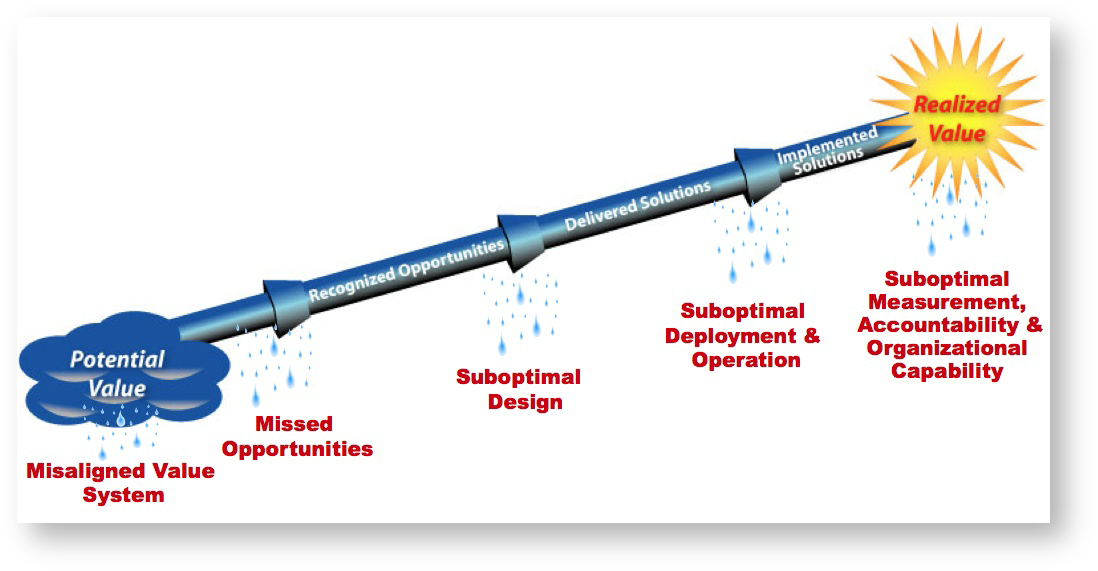How to Prevent Value Leakage ( The Greatest threat to Business Value Realization)-?
Value is the lifeblood of the business world. Value, in the form of improved efficiency, effectiveness, and ultimately, profit, is what businesses are interested in. But the greatest threat to value realization is Value Leakage. Value leakage occurs throughout the value network as solutions move from conception to customer implementation.
For example, the business might knew the impact of outages and disruptions in terms of lost revenue but did not share this with IT, nor did they request an IT strategy for reducing business disruptions (Value leakage), at the same time IT support was aware of the business impact. IT support could not handle the amount of work, nor prioritize the Work in Progress in relation the business value as it had insufficient resources and inappropriate skills. In one team $5 Million was lost due to downtime, in the second team $6.5 million. Representing significant ‘value leakage’.
In order to minimize value leakage and maximize business value realization, the Business Relationship Manager can act as a Transition Advisor to their Business Partners. The BRM must be an ambassador for good Value Management practice, and work with their key stakeholders to overcome these challenges and establish a “Value Optimization Culture.” BRM can help realize the value by the way of:
- Strong deployment approach that should minimize business disruption – Business Transition Management
- Monitor Value Leakage
- Create a roadmap on how on how to achieve specific changes in a stipulated time frame to achieve the business value
Business Transition Management
Business Transition Management ensures that business areas impacted by an initiative are identified, understand and are prepared for the business transition (not just the technology transition) so that disruption to business operations is minimized and the full value of the project is achieved.
BTM can help organization through building urgency for change, clarify transition issues, Assess Transition Portfolio Capacity, and Converting Business Drivers into Pain, Opportunity or Remedy Discussions

Value Leakage
Value leaks when the Value System between Provider and Business Partner is misaligned; when opportunities to create value are missed, when Provider solutions fail to fully meet the needs of the opportunity, when the solution is deployed or operated in a suboptimal way, or when business value measurement, accountability or organizational capability are lacking.
Value Leak Examples include inadequate or ineffective training, poor management of organizational change and failure to replace obsolete solutions when new solutions are available (people continue using the old, familiar solution rather than learn the new solution).
Road Map
Develop a Road Map for the organization that will help
- Outlines the specific processes, infrastructure, behaviors and mindset changes that need to occur each week and month in the initial deployment phase.
- Alert the Business Partner when there are risks of ‘value leakage’ and help create strategies to ensure that leakage does not occur.
- Make sure information about business priority and impact is made available to operations, in a timely way to enable them to plan resources, prioritize effectively and manage impact (Value Leakage).
- Ensure people know the ‘Why’, ‘What are they working for!’ – Everybody needs to be aware of ‘Value creation’, ‘Value leakage’ and how their work contributes to or impacts this.
- Ensure people have the right information – ‘What do you need to know to get your job done’, ‘What do you need from me’
- Ensure a good communications plan, with the right channel to the different stakeholders
Note: Value Leakage image belongs to BRM Institute.





